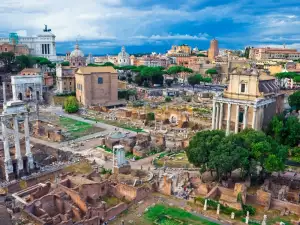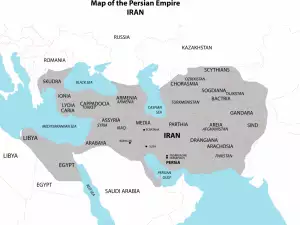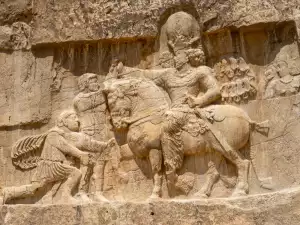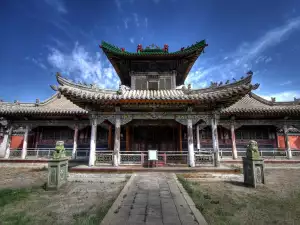When it comes to Columbia's lost civilizations, the Aztec and Mayan often overlooked the Zapotec.
For 1500 years the agricultural class Zapotec included in the 2000 square kilometers and was home to at least 100 000 people. Zapotec or Sapotec were pioneers in the use of agriculture and systems of writing, gifted weavers and artists of ceramics. They built Monte Alban, one of the oldest cities in America and had created a remarkably well-organized bureaucratic structure, however it all crashed and no one knows exactly why.
The place where the civilization of Zapotec inhabited was known to be located 40 kilometers outside of Oaxaca city, the country of the ancient town called El Palmillo. In the last revealings of this fascinating civilization, archaeologists Gary Feynman and Linda Nicholas have thrown light on their everyday life and say that around 200-900 BC, the civilization was thriving.
El Palmillo was one many ancient cities of Zapotec. In the final part of Monte Alban - Local seat of power, there lived about 5000 people, including farmers, workers and artists. They produced food and goods from local succulent plants, and exchanged them for goods and services from other villages. They had built palaces and homes for the elite, which in turn used their workforce and collected taxes from them.
Feynman and his team have dug a series of terraces from the base to the top of the slope, which reveal the social, political and economic changes in the history of El Palmillo.
Excavations of the palace took place during 2007-2008, the team of Feynman and Nicholas discovers the largest of several palace situated on the slopes of El Palmillo. Excavations are conducted with the cooperation and support of National Geographic.
Whilst digging, they discovered that the Palace chamber has been changed several times during 500-900 BC. At its highest it reached about 600 square meters and consisted of about 20 rooms with three internal courtyards, serving perhaps for political meetings.

Construction and modification of such massive structures, covered with thick walls and rooms, requires a significant investment of resources and manpower. The construction of the palace began with an underground tomb in which the Zapotec burnt the dead. Also found was the remains of a dog.
"Dogs are often placed with the dead, " Feynman said, "Some of the great mesoamerica ideology lies in the belief that a dog can bring you to the underworld."
Change forces
The Palace and Temple were occupied when Zapotec took economic and political power and moved from Monte Alban to El Palmillo changes cities in the region.
Indicator of this is that somewhere around 750 BC on the circular patio within the Palace was where he used to play with a rubber ball, which was a ritual sport common in mesoamerica.
"This is a sign that El Palmillo wanted to become a big center, and not send his players in Monte Alban" Feynman said.
However the period of the rise of El Palmillo was short. During his fourth occupation, around 800 BC, the palace had been reduced to the size of that very patio.
Feynman believes that desertification occurred peacefully and gradually, continuing around from 50 to around 100 years. Over 900 occupations were small, however were separated in time, which raises the question of "what happened? "
Regional land or crash?
Progressive collapse in the valley of Oaxaca had a parallel orientation through mesoamerica. The greatest Mayan centers were located over hundreds of miles. Experts at odds over what caused this collapse.
Some believe that the reason for the end of the Zapotec lies in the natural factors. It is documented that they suffered extreme droughts, which may lead to social and political decline.
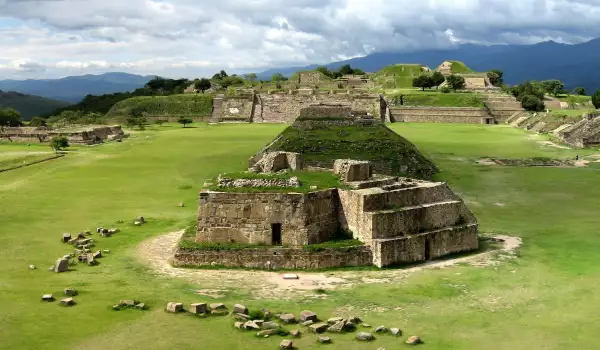
The economy of the Valley was led by farmers and a society in a big land, it is logical to have a decline when the departure of cities, representatives take place and dealing with ceramics. Plus we know that there are characters that also disappear according to the archaeological records.
Other archaeologists believe that the drought is not only guilty of the collapse of the city. A combination of different factors all play their part including, drought and political instability or war.
Feynman says that the economic collapse of mesoamerica has led people to move out and leave their homes. But cities and populations are restored.
"At some point recirculation will occur, " Feynman said "although things may not look exactly as they did when it started during the twilight of the city of Zapotec”.

